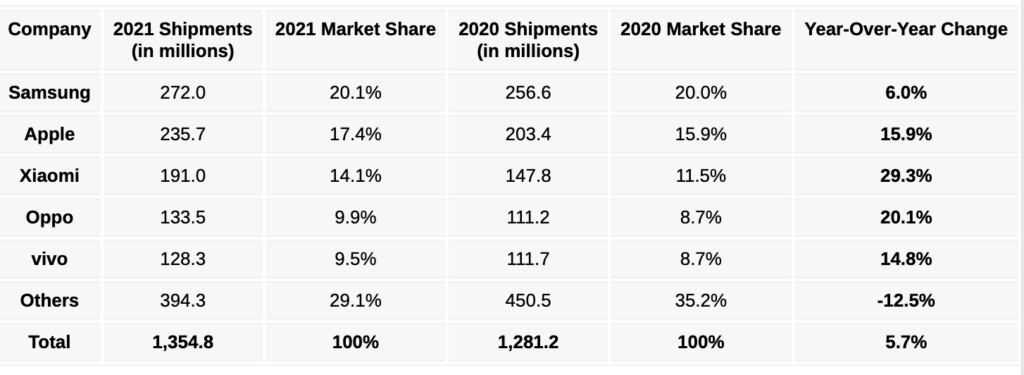Constraints on the supply chain are disproportionately impacting the non-advanced chipset market, signaling a particular challenge for 5G
Global supply-chain constraints, driven mostly by the COVID-19 pandemic, are continuing to impact nearly every industry, even as much of the world is returning to pre-pandemic life. In the telecoms market, the pressure on the supply chain has been exacerbated by global sanctions enacted against the Chinese vendor Huawei and by an increase in consumer and business demand for connectivity infrastructure and solutions.
During a panel discussion at RCR Wireless News’ 5G Monetization Forum, Keith Mallinson, founder of WiseHarbor, and Neil Shah, vice president and co-founder of CounterPoint Research, spoke more specifically about where the constraint is being felt within the telecoms industry and how it’s impacting the 5G agenda.
“Supply hasn’t completely disappeared,” Mallinson pointed out, commenting that many smartphones are still readily available. “The top five smartphone OEMs actually all increased their market shares and their sales volumes significantly year-over-year in 2021 … partly because they had better supply-chain arrangements with more component inventory and longer-term supply contracts and others.”
IDC data supports this claim, showing that the overall smartphone market experienced a 5.7% increase in 2021 shipments despite a “sluggish” final quarter of the year that saw a 3.2% decline.

Mallinson went on to say, however, that these OEMs have indicated that while they have an adequate supply of advanced nodes, they are being hit by a shortage of legacy nodes, which signals a particular challenge for 5G.
“With 5G, everyone is looking for those killer applications beyond smartphones and those are IoT, robotics, AR and VR [and] FWA,” said Shah, explaining that these use cases don’t require advanced smartphone chipsets, and therefore, are subject to the very supply-chain constraint outlined by Mallinson. “This situation will remain for at least another year,” Shah predicted, an outlook shared by others in the industry, including Intel and TSMC.
Routers and other Customer Premise(s) Equipment (CPEs) are also being impacted because they, too, require low-end chipsets. Wi-Fi, for example, is facing high constraints, Shah stated.
Even further, Shah expressed that when it comes to 5G monetization, Fixed Wireless Access (FWA) would have been “a clear application” if only there was no pandemic. “We would have seen more FWA roll out … everywhere globally, but that was not the case because of the CPU supply constraint and again, the biggest CPU vendor is Huawei, so they could not get chipsets [out] … and the transition for someone like Vodafone or European operators moving from Huawei-based CPE to [another vendor] took almost 16 to 18 months.”
“[The pandemic] has caused so many disruptions to the sort of balance and the continuity that there were in various supply chains. Because of the structure of the chip industry with large-cap investments required and fixed capacity, it’s much more difficult for things to adjust,” commented Mallinson. “You’ve got the auto manufactures, for example, who reduced their production and reduced their orders initially, and now things are snapping back in the opposite direction. For the folks who haven’t gotten themselves well-lined up, they’re going to continue to face some problems.”







